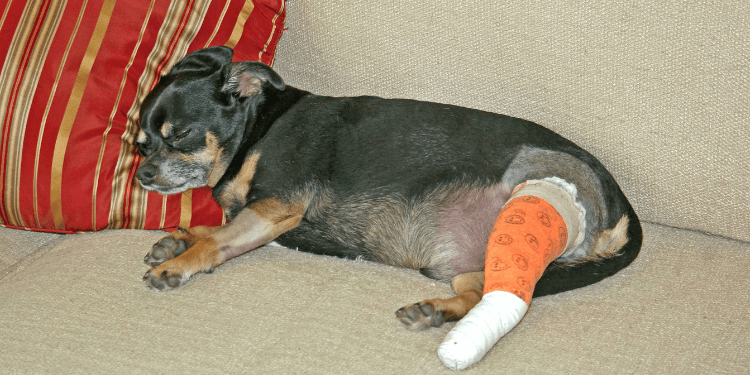ACL tears are the most common orthopedic injury in dogs, and it’s estimated that between 30% and 50% of dogs who tear one ACL will tear the other ACL within a few years. Why is this? Let’s take a closer look.
What happens when a dog tears their ACL?
When a dog tears their ACL (or cranial cruciate ligament), the joint becomes unstable. When they place weight on the limb, there is a shearing force on the joint, which makes the femur slide backward on the surface of the tibial plateau. This is not only painful for your dog, but also potentially damaging to the cartilage in the joint. The abnormal movement creates excessive wear and tear on the cartilage surface, which causes a further arthritic change in the joint. This abnormal motion also frequently damages the cartilage pads in the joint, known as the menisci, which leads to further arthritic change. Many dogs develop such severe arthritis that their leg is in constant pain.
How does the other ACL get torn?
When one ACL is torn, a dog will naturally transfer most of its weight to the other leg. This compensation puts the other ACL in their “good leg” in greater danger of tearing due to overuse. If a dog tears both their ACLs, simple movements such as walking and getting up or down become very difficult and their quality of life can suffer greatly.
How do I prevent my dog’s ACL from tearing?
There are several things you can do to lessen the risk of an ACL tear in your dog:
-
Keep Your Dog at a Healthy Weight
Obesity is one of the biggest (and most preventable) factors that contribute to ACL injuries in dogs. The easiest way to maintain healthy body weight is to make sure you’re not overfeeding your dog. As a rule of thumb, do not believe what the guidelines or instructions say on your bag of dog food. The truth is that in today’s society with the average dog’s lifestyle, pet food manufacturers are recommending way too much food. For a more complete calculation on how much food to give your dog for their weight and lifestyle, read our Complete Guide to Weight Loss for Dogs.
-
Give a Quality Joint Supplement
Providing a high-quality Omega-3 supplement is one of the best and easiest things you can do to help prevent an ACL tear and other issues in your dog’s joints. Whether your dog is young or old, has zero joints issues or severe joints issues, or has a torn ACL or not, now is the best time to start them on a quality joint supplement.
So how do you choose the best joint supplement for your dog? Many people are familiar with glucosamine, and to a lesser degree chondroitin, as key ingredients in a good joint supplement. But what many people don’t realize is that it’s just as important to find one that includes natural ingredients with proven anti-inflammatory benefits such as MSM (methylsulfonylmethane) or vitamin C, to name a few of the more common ones. TopDog’s joint supplement GlycanAid HA contains everything you need to give your dog the best quality support, including glucosamine, chondroitin, MSM, Cetyl-M, and Vitamin C.
-
Provide physical therapy and proper conditioning after surgery
If your dog does tear one of their ACLs, your veterinarian will likely recommend ACL surgery. While there are many types of ACL surgery, regardless of which option you choose, it’s the post-operative care that will determine how successful the procedure is. When dogs are unable to use their leg after surgery, they quickly begin to lose muscle mass and range of motion in that leg. The sooner the knee is stabilized, the less muscle atrophy that occurs, and the faster the recovery post-op. A full and fast recovery greatly lessens the risk of further or recurring injury.
The first 12 weeks following surgery are a critical time for recovery and rehabilitation. Controlled exercise and encouraging the dog to begin using the leg are keys to a successful recovery. This is where canine rehabilitation (i.e. physical therapy for dogs) comes in. These exercises focus on safe weight-bearing of the limb, combating muscle atrophy, and improving range of motion.
It’s always best to seek professional guidance from your veterinarian about canine rehabilitation post-surgery. You can also download TopDog Health’s free Guide to Cruciate Surgery and Recovery, which will help you understand the best therapies and practices to help your dog recover fully from ACL surgery.
If you suspect or know your dog has a torn ACL, schedule a veterinary appointment immediately to provide them with the help they need to be their happiest, healthiest selves.











